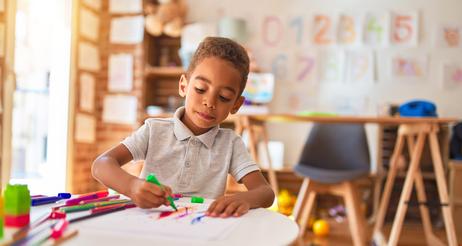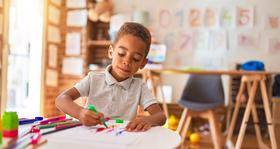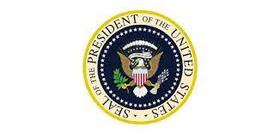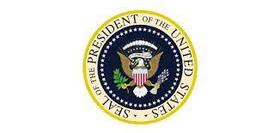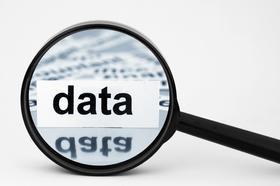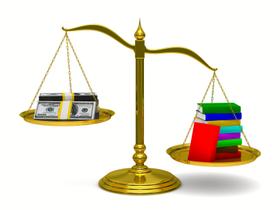Social Emotional Learning: Education's Hidden Symphony
As a classical musician and writer, I deeply understand how emotions and social connections shape our learning experiences. Let me share my perspective on Social Emotional Learning, a framework that resonates strongly with my artistic background. To help you understand SEL, I have included quotes from authoritative sources together with links, so that you explore the subject more fully. Here's why Social Emotional Learning (SEL) is as essential to your child's development as learning their ABCs or multiplication tables.
The Daily Impact
Your child might struggle with situations like:
- Getting frustrated when homework becomes challenging
- Having difficulty making friends at school
- Feeling anxious about speaking up in class
- Managing conflicts with siblings
SEL helps children navigate these everyday challenges by teaching them to understand and manage their emotions just as they learn to read or solve math problems. Since a report indicates that too much screen time on smartphones increases children's aggressiveness, SEL is a tool that can mitigate those unhelpful emotions.
The research also suggests that teachers with better social emotional learning (SEL) skills are more likely to have good relationships with students, and those students in turn are more engaged in learning. Source: American Psychological Association
Real Benefits for Your Child
Think of SEL as giving your child an emotional toolkit. Children who participate in SEL programs show remarkable improvements:
- Higher academic scores and test results
- Better classroom behavior and focus
- Stronger friendships and social connections
- Increased ability to handle stress and anxiety
Social-emotional learning is the process of acquiring the ability to recognize and manage your own emotions, take the perspective of others, establish and maintain positive social relationships, and handle interpersonal situations with competence. Source: Psychology Today
This TedX Talk explains how Social-emotional Learning benefits everyone.
Supporting SEL at Home
You're already teaching SEL when you:
- Listen to your child's feelings about their day
- Help them work through conflicts with siblings
- Celebrate their efforts, not just achievements
- Model healthy emotional responses yourself
The National Association for the Education of Young People has several suggestions for supporting SEL at home. Here's a familiar one:
Read bedtime stories. There is something magical about this end-of-the-day routine that makes it the ideal time for talking about feelings. Discuss the characters and events in the story. Invite your child to share her thoughts and feelings by asking questions: "What do you think he should do? How do you think she feels? What would you do if you were this character?"
Long-Term Success
Just as I've seen in my music teaching, emotional skills are as crucial as technical ones. I trained children's choirs throughout my thirty-seven years as a church musician. I have no doubt that children with strong SEL foundations are better prepared for:
- Higher education success
- Future workplace challenges
- Healthy relationships
- Better mental health outcomes
Remember, when we nurture both the heart and mind, we give our children the best chance to compose their own successful life stories. Again, and I know I emphasize this a great deal when talking about private schools, but educating the whole child is at the center of most private school educations. It's what private schools with their small classes do very well.
The Heart of SEL
Music, like emotional intelligence, speaks a universal language. Social Emotional Learning operates on this same principle, creating harmonious connections between our inner world and our interactions with others. In my experience conducting orchestras and teaching students, I've witnessed how understanding emotions creates a more profound resonance in both performance and personal growth. Conducting a performance of Giovanni Battista Pergolesi's setting of the thirteenth-century poem Stabat Mater at St. Michael's Episcopal Church, Litchfield, Connecticut on a Good Friday back in the 80s was a perfect example of how SEL works. My choir consisted of boys and girls ages 9-14. Their radiant tone projected this 17th-century choral masterpiece into the nave of the church in a manner only the melding of heart, mind, and musical talent could make possible. What really pushed that musical experience for those young people over the top was processing into the church and seeing that the place was packed. Not a seat left. I heard music making of the highest order. I attribute that to the efficacy of SEL working its magic over the many months leading up to that performance.
This video explains SEL and why it matters.
The Five-Part Symphony of SEL
Just as a symphony has multiple movements, SEL comprises five essential components that work in concert with each other.
Self-Awareness: The First Movement
Like tuning an instrument, self-awareness helps us recognize our emotional pitch. As musicians, we must constantly assess our tone, timing, and expression. Similarly, SEL teaches students to recognize their emotional state and understand how it affects their performance and interactions.
Self-awareness is the ability to accurately assess one’s own strengths, limitations, and emotions and how these factors influence behavior. It requires cultivating mindfulness and an awareness of emotions, preferences, drives, and motivations. Source: LessonBee
Self-Management: The Second Movement
This reminds me of practicing difficult passages - it requires patience, persistence, and emotional regulation. Students learn to conduct their emotions like a maestro, directing their energy toward positive outcomes and managing stress with the precision of a metronome.
For the kiddos, let’s break it down into bite-sized pieces. Self-management is like being the boss of your own feelings and actions. Imagine you’re the captain of your ship 🚢—you decide where it goes and how it sails, even when the waters get a little choppy. Source: SELCurve
Social Awareness: The Third Movement
In an orchestra, each musician must listen to others while playing their part. This same principle applies to social awareness, where students learn to recognize and respond to the emotional cues of others, creating harmony in their social interactions.
Social awareness involves the ability to understand and empathize with others, particularly with people from different backgrounds than one’s own. Source: Greater Good Science Center
Relationship Skills: The Fourth Movement
Just as chamber music requires intimate collaboration, relationship skills enable students to create meaningful connections. They learn to communicate with the clarity of a well-articulated phrase and resolve conflicts with the grace of a well-executed cadenza.
The ability to establish and maintain healthy and rewarding relationships with diverse individuals and groups. The ability to communicate clearly, listen well, cooperate with others, resist inappropriate social pressure, negotiate conflict constructively, and seek and offer help when needed. Source: Harvard University Graduate School of Education
Responsible Decision-Making: The Final Movement
This culminating skill brings together all elements, like a symphony's finale. Students learn to make choices that consider both personal and collective well-being, much as musicians must balance individual expression with ensemble cohesion.
We can define responsible decision-making as the ability to make choices that affect you positively in your physical, intellectual, social, and emotional bodies. Source: PositiveAction
The Classroom Concerto
In my teaching experience, implementing SEL is like conducting one of the hymn festivals I did years ago. It requires careful attention to individual needs while maintaining group dynamics. We create a space where emotional expression is as valued as technical proficiency, where students feel safe to explore, make mistakes, and grow.
Community Ensemble
The broader implementation of SEL reminds me of a community orchestra, where different sections must work together for a harmonious result. Schools, families, and community partners each play vital roles in supporting students' emotional and social development. In an age when any partner in this enterprise can express support instantly via text and social media, SEL assumes a role of paramount importance in a child's bag of emotional tricks.
Measuring the Music
Assessment in SEL, much like riticizing a musical performance, requires both objective and subjective measures. We look for growth in emotional awareness, social skills, and academic achievement, much as we assess both technical precision and artistic interpretation.
Just as music has the power to transform both performer and audience, SEL has the potential to create positive change in our educational system. It teaches students to compose their own life's symphony, one where emotional intelligence and academic achievement play in perfect harmony.
Questions? Contact us on Facebook or Instagram. @privateschoolreview
#SEL #EmotionalIntelligence #Education #StudentSuccess #TeacherResources #PersonalDevelopment #SocialLearning #EducationalInnovation #TeachingStrategy #FutureOfEducation

